Quick Tips to Avoid Knee Pain When Squatting
Written by the Boostcamp staff
How to Avoid Knee Pain When Squatting: Quick Tips
Whether you're an experienced weightlifter or just starting out on your fitness journey, knee pain when squatting can be a common and frustrating issue that leads many people to skipping out on such a beneficial exercise. Knee pain during squats can range from a mild discomfort to severe pain that hinders your ability to perform squats effectively, or at all. Understanding the causes of knee pain when squatting and implementing preventive strategies can help you avoid discomfort and injury.
In this blog, we will discuss the common causes of knee pain when squatting, common conditions that contribute to knee pain, diagnosing knee pain triggers, treatment and recovery pathways, prevention strategies, and exercises to prevent knee pain when squatting.
So, let's dive in and learn how to keep our knees healthy and pain-free during squats.
Understanding Knee Pain When Squatting
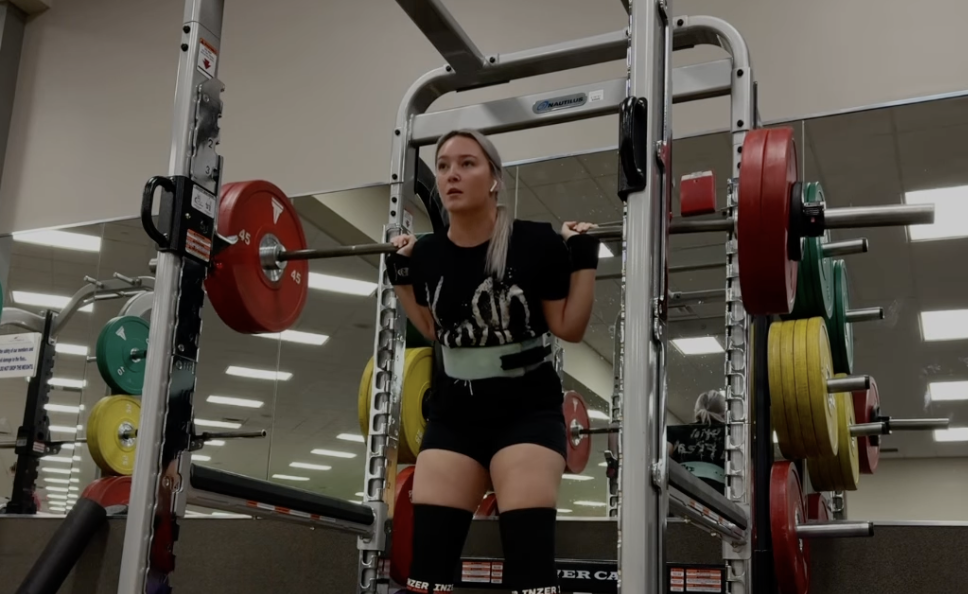
Squatting is a fundamental exercise that is used in almost any workout program, whether you are a powerlifter or bodybuilder or just your average lifter trying to stay in shape, as it engages multiple muscle groups, including the quadriceps, hamstrings, glutes, and calves. Squatting even activates the core muscles. However, it's important to note that knee pain when squatting is not normal and can indicate an underlying issue.
Identifying the Causes of Knee Pain During Squats
One of the main causes of knee pain when squatting is patellar tendonitis, commonly known as "Jumper's Knee". This condition occurs when the patellar tendon, which connects the kneecap to the shinbone, becomes inflamed due to repetitive stress or overuse (no, "Jumper's Knee does not mean you obtained the injury through jumping). Muscle imbalances can also contribute to knee pain when squatting, as weak or tight muscles can disrupt proper movement patterns and place excessive strain on the knee joint. Limited ankle mobility is another common factor that can lead to knee pain during squats. When the ankle lacks flexibility, it can cause the knees to compensate, resulting in increased stress and pain.
Another common cause of knee pain during squats is patellofemoral pain syndrome, also known as runner's knee. This condition occurs when the patella, or kneecap, doesn't track properly, causing friction and irritation. Other common causes of knee pain during squats include muscle imbalances, poor movement patterns, and excess pressure on the knee joint. Identifying the root cause of knee pain is crucial in preventing further injury and discomfort.
To prevent knee pain when squatting, it's important to address these underlying causes. Strengthening the muscles surrounding the knee joint, such as the quadriceps and hamstrings, can help improve muscle imbalances and provide better support for the knees during squats. Additionally, focusing on improving ankle mobility through exercises and stretches can promote proper alignment and reduce pressure on the knees.
Incorporating exercises that target hip strength and mobility is also beneficial, as strong hip muscles can help stabilize the knee joint and prevent excessive movement or valgus collapse. By identifying and addressing the root causes of knee pain during squats, you can take proactive steps to prevent further discomfort and injury.
The Impact of Squatting Technique on Knee Pain
The way you perform squats can have a significant impact on your knee health. Poor squatting technique and improper movement patterns can increase the risk of knee pain and injury. It's important to understand the correct squatting technique to protect your knees and get the most out of your squatting exercises.
One common mistake that can lead to knee pain when squatting is knee valgus, where the knees collapse inward towards each other. This movement puts excess stress on the knee joint, potentially causing pain and discomfort. To avoid knee valgus, it's important to maintain proper alignment by keeping your knees in line with your toes throughout the squatting motion.
Another misconception when it comes to squatting technique is the angle of the knee joint. Many people believe that squatting deep, below parallel, is harmful to the knees, but this is not true for healthy individuals. In fact, squatting to full depth, where the hip joint is below the knee joint, can actually help strengthen the muscles surrounding the knee and improve knee joint stability. The key is to maintain good form and control throughout the movement, prioritizing proper technique over excessive weight or depth.
Common Conditions Contributing to Knee Pain While Squatting
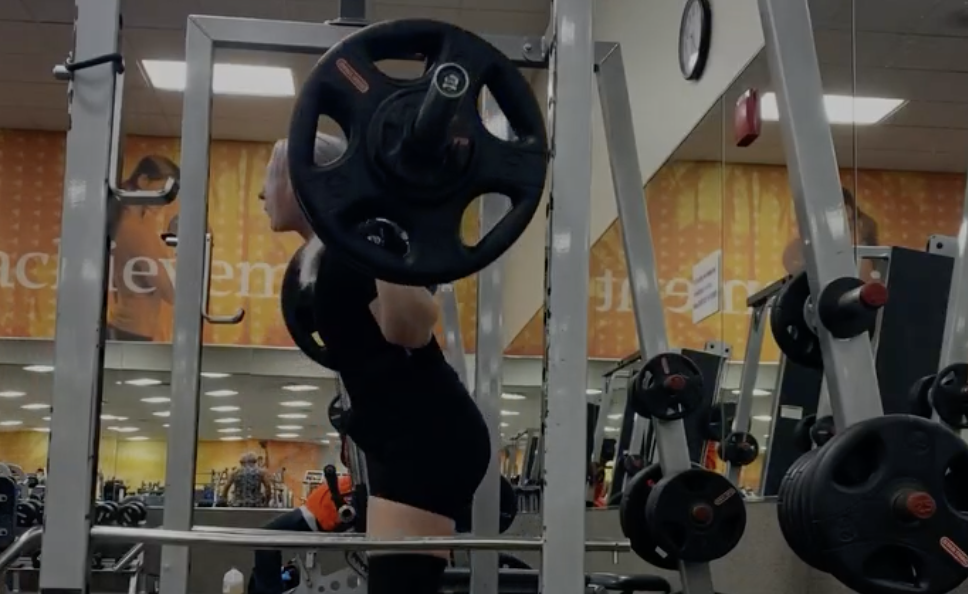
In addition to the common causes of knee pain when squatting, there are specific conditions that can contribute to knee pain and discomfort. Osteoarthritis, a degenerative joint disease, can cause knee pain during squats, especially in individuals with pre-existing joint damage or inflammation. Patellar tendonitis, also known as jumper's knee, is another condition characterized by inflammation of the patellar tendon, resulting in pain just below the kneecap. Iliotibial band syndrome, or IT band syndrome, occurs when the iliotibial band, a thick band of tissue that runs along the outer side of the thigh, becomes tight or inflamed, causing pain on the outside of the knee. Understanding these common conditions is crucial in addressing knee pain and finding appropriate treatment strategies.\
Osteoarthritis and Knee Pain
Osteoarthritis, also known as degenerative joint disease, is a condition that affects the cartilage, the protective tissue at the ends of bones that cushions the knee joint. Over time, the cartilage can wear down, causing pain, inflammation, and stiffness. Squatting exercises can exacerbate knee pain in individuals with osteoarthritis, especially if the joint already has damage or inflammation. It's essential to listen to your body and modify squatting exercises as needed to avoid further discomfort and injury.
While it may seem counterintuitive, engaging in regular physical activity, including strength training exercises like squats, can actually be beneficial for individuals with osteoarthritis. However, it's crucial to work with a healthcare professional, such as a physical therapist, to develop a safe and effective exercise routine tailored to your specific needs. They can guide you in proper movement patterns, provide modifications, and suggest exercises that strengthen the muscles surrounding the knee joint to support stability and reduce pain.
Patellar Tendonitis: An Overview
Patellar tendonitis, commonly known as jumper's knee, is a condition characterized by inflammation of the patellar tendon, which connects the kneecap to the shinbone. This condition often arises from repetitive stress or overuse of the tendon, such as during activities that involve jumping or squatting. In individuals with patellar tendonitis, squatting can exacerbate pain and discomfort in the area just below the kneecap.
To manage patellar tendonitis pain when squatting, it's important to reduce the inflammation and provide support to the knee joint. Rest and avoiding activities that aggravate the condition are essential in the initial stages of recovery. Icing the affected area after activity can help reduce inflammation and pain. Compression braces or bands applied around the knee can offer additional support and stability, minimizing stress on the patellar tendon during squats. Strengthening exercises, such as quadriceps and hamstring exercises, can also aid in the rehabilitation of patellar tendonitis and help prevent future pain when squatting.
IT Band Syndrome and Squatting
Iliotibial band syndrome, often abbreviated as IT band syndrome, is a common overuse injury that causes pain on the outside of the knee. The iliotibial band (IT band) is a thick band of tissue that runs along the outer side of the thigh, from the hip to the knee. When the IT band becomes tight or inflamed, it can rub against the outer knee joint, causing friction and pain, especially during activities like squatting.
Addressing muscle imbalances and irritation of the IT band is crucial in managing IT band syndrome pain when squatting. Here are some strategies that can help alleviate IT band syndrome pain:
Stretching exercises: Regular stretching of the IT band can help reduce tightness and improve flexibility, reducing friction on the knee joint.
Foam rolling: Using a foam roller to apply pressure to the IT band can help alleviate tightness and promote better movement during squats.
Strengthening exercises: Engaging in strength training exercises that target the hip muscles, glutes, and quadriceps can provide better support to the knee joint, reducing strain on the IT band.
Modifying squatting technique: Adjusting your squatting technique to avoid excessive knee valgus or collapsing inward can help minimize friction on the IT band.
Diagnosing Knee Pain Triggered by Squats
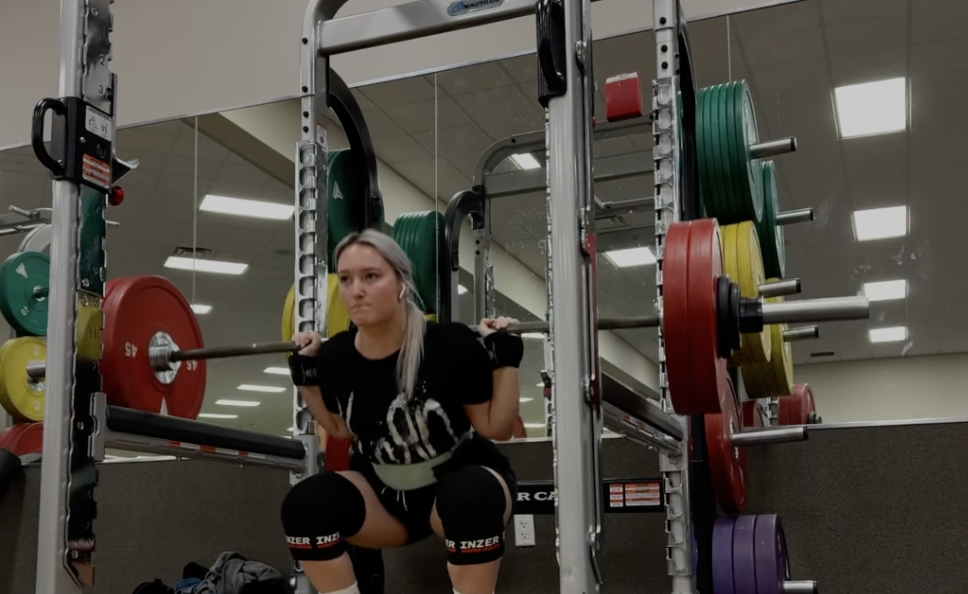
If you're experiencing knee pain when squatting, it's crucial to seek an accurate diagnosis to determine the cause of your discomfort. While self-diagnosis can provide some insight, it's best to consult a healthcare professional for a comprehensive evaluation. A physical therapist or sports medicine physician can assess your knee pain, review your medical history, and perform physical tests to pinpoint the exact cause of your knee pain when squatting. Through their expertise, they can develop an appropriate treatment plan and provide guidance on preventing future knee pain during squats.
How to Accurately Identify the Cause of Your Pain
When seeking an accurate diagnosis for knee pain triggered by squats, consulting a physical therapist or sports medicine physician is often beneficial. These healthcare professionals have specialized training in diagnosing and treating musculoskeletal conditions. During your evaluation, they may ask about your exercise routine, past knee injuries, and any symptoms or patterns of pain you experience. They may also perform physical tests, such as assessing your squatting technique, checking for muscle imbalances, and evaluating joint range of motion. Some common causes of knee pain when squatting that may be identified through diagnosis include:
Meniscus tear: A tear in the cartilage of the knee joint, often caused by sudden twisting or direct impact, can lead to pain and limited mobility, especially during squats.
Patellofemoral syndrome: This condition involves pain around the kneecap, often aggravated by activities like squatting, and can be caused by factors such as overuse, muscle imbalances, or poor alignment of the kneecap.
By accurately identifying the cause of your knee pain, you can receive appropriate treatment, implement preventive measures, and make necessary modifications to your squatting technique.
When Should You Consult a Doctor?
While knee pain during squats is common, certain symptoms may indicate the need to consult a doctor. If you experience persistent knee pain that does not improve with rest, or if the pain is severe and significantly impacts your daily activities, it's important to seek medical advice. Additionally, if your knee pain is accompanied by swelling, stiffness, or other concerning symptoms, it's best to consult a healthcare professional.
Individuals who lead sedentary lifestyles and suddenly engage in squatting exercises may be at higher risk of knee pain due to weak muscles and poor joint mobility. If you fall into this category, it's advisable to start slowly and gradually increase the intensity and duration of your squats to allow your muscles and joints to adapt. If you experience knee pain during squats, it may be a sign that you need to back off and consult a doctor or physical therapist for further evaluation.
Treatment and Recovery Pathways for Squat-Induced Knee Pain
When it comes to treating and recovering from squat-induced knee pain, there are various pathways to explore. The appropriate treatment plan will depend on the underlying cause of the knee pain and should be tailored to each individual. In many cases, a multimodal approach is most effective, combining different treatment strategies to address pain and promote recovery. Some common treatment options for squat-induced knee pain include physiotherapy, prolotherapy, and the use of custom orthotics.
Let's explore these treatment pathways in detail.
Physiotherapy as a Treatment Option
Physiotherapy, also known as physical therapy, is an effective treatment option for squat-induced knee pain. A physiotherapist can assess your squatting technique, muscle imbalances, and joint mobility to develop a personalized treatment plan. Here are some common physiotherapy interventions that can help alleviate knee pain when squatting:
Strength training exercises: Strengthening the muscles surrounding the knee, including the quadriceps, hamstrings, and glutes, can provide better support and stability, reducing knee pain during squats.
Joint mobilization techniques: Manual therapy techniques, such as joint mobilization, can help improve knee joint mobility, reduce stiffness, and enhance squatting performance.
Kinetic chain exercises: Addressing muscle imbalances and movement patterns throughout the entire lower kinetic chain, from the feet to the hips, can help correct alignment issues, enhancing squatting technique and reducing knee pain.
Pain relief modalities: In some cases, physiotherapists may incorporate pain relief modalities like heat therapy, electrical stimulation, or ultrasound to help manage knee pain when squatting.
Education and guidance: Physiotherapists can educate individuals about proper squatting technique, modifications, and preventive strategies to avoid further knee pain and injury.
Understanding Prolotherapy
Prolotherapy is a regenerative therapy that may be considered for individuals experiencing squat-induced knee pain. This treatment involves the injection of a solution, typically containing a dextrose or sugar-based substance, into the affected area. The injection causes a localized inflammation, which stimulates the body's natural healing response, leading to pain relief and tissue repair. Prolotherapy is thought to strengthen ligaments and tendons surrounding the knee joint, providing better support and stability during squats. While research on the effectiveness of prolotherapy for knee pain is mixed, some individuals may find it beneficial as part of their squat-induced knee pain recovery plan. It's important to consult with a healthcare professional to determine if prolotherapy is a suitable treatment option for your specific case.
Custom Orthotics and Their Role in Pain Management
Custom orthotics, also known as shoe inserts or insoles, can play a beneficial role in managing squat-induced knee pain. These devices are custom-made to fit the unique shape of an individual's foot, providing support, alignment, and shock absorption. Custom orthotics work by redistributing pressure and reducing excess stress on the knee joint, potentially alleviating knee pain when squatting. Additionally, knee sleeves, compression garments designed to support the knee joint, can provide stability and reduce inflammation, promoting pain relief during squats. To determine if custom orthotics or knee sleeves are suitable for your knee pain, it's best to consult with a healthcare professional who can assess your specific needs and provide tailored recommendations.
Prevention Strategies to Avoid Knee Pain When Squatting
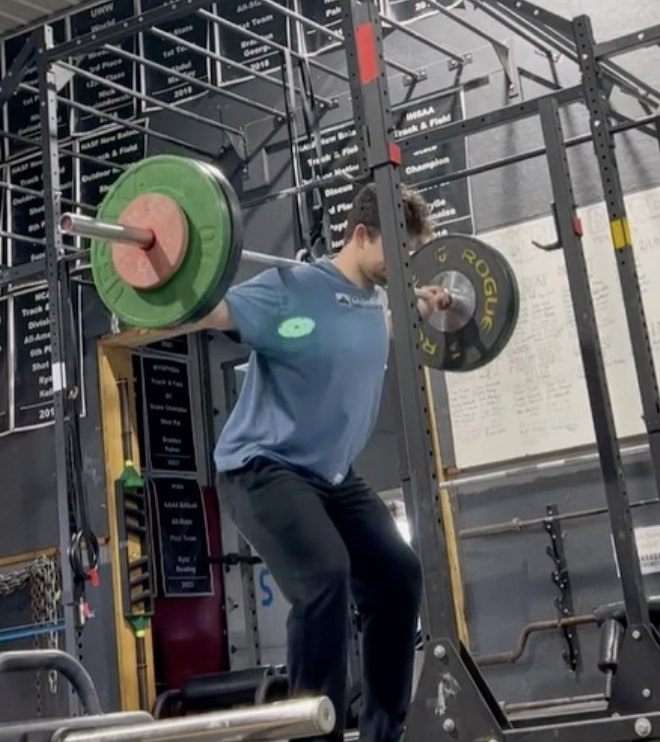
Preventing knee pain when squatting is key to maintaining a healthy and pain-free fitness routine. By implementing proper techniques, exercises, and strategies, you can greatly reduce the risk of knee pain and injury. Incorporating preventive measures into your squatting routine can help you enjoy the physical and mental benefits of squats while minimizing discomfort. Let's explore some effective prevention strategies to avoid knee pain when squatting.
The R.I.C.E Method
The R.I.C.E method is a common acronym used to remember the steps for immediate treatment of acute injuries, including knee pain. When implemented in a timely manner, it can help reduce pain, swelling, inflammation, and promote healing. Here's a breakdown of the R.I.C.E method and how it can aid in preventing knee pain when squatting:
Rest: Providing adequate rest to the knee joint allows for tissue repair and prevents further aggravation of knee pain. Listen to your body and take time off from squatting if you experience persistent pain.
Ice: Applying ice to the affected area can help reduce inflammation and pain. Ice can be used after squats, especially if you experience any discomfort or swelling in the knees.
Compression: Wearing compression braces or bands around the knee joint during squats can provide additional support, stability, and reduce swelling, minimizing the risk of knee pain.
Elevation: Elevating the affected leg when not engaging in physical activity can help reduce swelling, promote circulation, and aid in the recovery of knee pain.
By incorporating the R.I.C.E method as a preventive measure, you can effectively manage knee pain when squatting and promote a healthy recovery.
Heat Therapy
Heat therapy is an effective method for muscle relaxation, pain relief, and improving circulation. By incorporating heat therapy into your routine, you can promote muscle flexibility, minimize stiffness, and reduce the risk of knee pain when squatting. Here are some ways to incorporate heat therapy into your squatting routine:
Warm-up exercises: Prioritize warming up your muscles with dynamic stretches, light cardio exercises, or a warm bath or shower before squatting. The heat will help increase blood flow, loosen muscles, and prepare your body for physical activity.
Hot packs or heating pads: Applying a hot pack or heating pad to the knee joint before squats can help relax muscles, improve flexibility, and reduce the risk of knee pain.
Heat wraps or warm clothing: Wearing heat wraps or warm clothing around the knees, such as compression knee sleeves, can provide continuous heat therapy during squats, promoting muscle relaxation and pain relief.
Remember to apply heat therapy safely and avoid using excessive heat or prolonged exposure, as it can lead to burns or tissue damage. If you have any underlying medical conditions, it's advisable to consult with a healthcare professional before incorporating heat therapy into your routine.
Exercising Correctly to Prevent Knee Pain
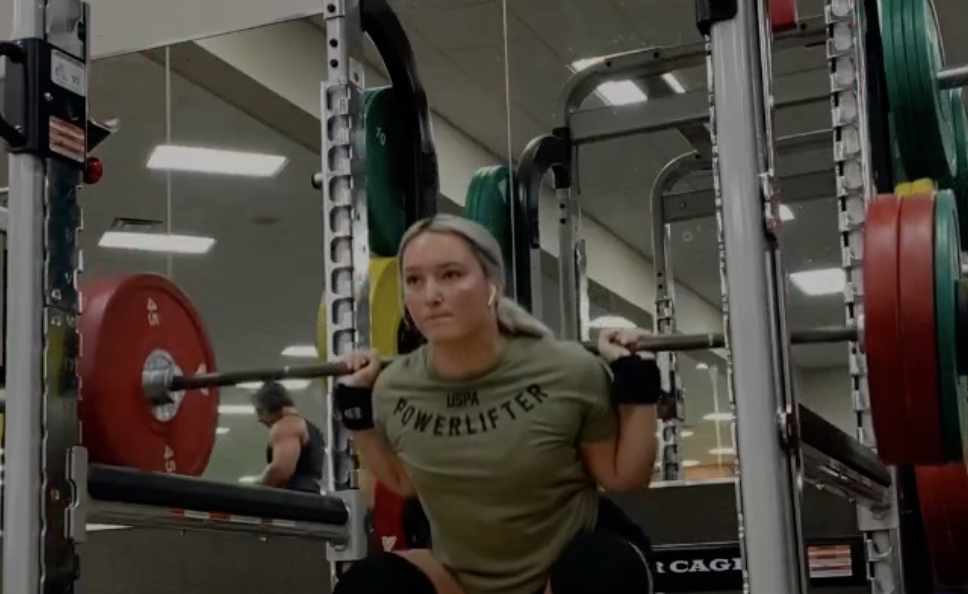
Exercising correctly is crucial to preventing knee pain when squatting. By implementing proper technique, paying attention to alignment, and incorporating exercises that strengthen the muscles surrounding the knee joint, you can reduce the risk of knee pain and injury. Let's explore some key strategies for exercising correctly to prevent knee pain when squatting.
Perfecting Your Squatting Technique
Perfecting your squatting technique is essential for preventing knee pain and maximizing the benefits of squats. Here are some key elements to consider when perfecting your squatting technique:
Full squats: Contrary to common misconception, squatting to full depth, where the hip joint is below the knee joint, can help strengthen the muscles surrounding the knee joint, improve mobility, and promote stability during squats. However, it's important to maintain good form and control throughout the movement.
Right angle: Achieving a right angle between the thigh and lower leg when squatting can help distribute the load evenly and prevent excess pressure on the knee joint. This angle ensures that the knees are aligned with the toes, reducing the risk of knee pain.
Proper standing position: Initiating the squat from a proper standing position is crucial. Start with your feet shoulder-width apart, toes pointed slightly outward, and maintain a tall, stable posture throughout the squatting motion. This alignment helps maintain stability, support, and reduces the risk of knee pain when squatting.
By focusing on these aspects of squatting technique, you can ensure that you're exercising correctly, maintaining knee health, and avoiding unnecessary strain or pain.
Additional Exercises for Strengthening Your Knees
In addition to squatting, incorporating specific exercises that target knee strength and stability can help prevent knee pain when squatting. Here are some exercises to consider:
Leg presses: Leg presses can be a valuable exercise to strengthen the quadriceps muscles, which play a significant role in knee stability when squatting.
Hip exercises: Strengthening the hip muscles, such as the glutes and hip abductors, can provide additional support to the knee joint, reducing the risk of knee pain during squats.
Quadriceps exercises: Isolated exercises like leg extensions or lunges can help specifically target the quadriceps muscles, reinforcing knee strength and stability.
Hamstring exercises: Strengthening the hamstrings, located at the back of the thigh, through exercises like Romanian deadlifts can provide better muscle balance around the knee joint, reducing the risk of knee pain during squats.
Calf raises: Including calf raises in your workout routine can improve lower leg strength and stability, providing additional support to the knee joint.
Incorporating these exercises into your fitness routine, alongside squats, can help maintain knee health, prevent muscle imbalances, and reduce the risk of knee pain when squatting.
How Can I Continue Working Out Without Aggravating My Knee Pain?
Experiencing knee pain when squatting can be challenging, especially for those who are passionate about fitness and physical activity. However, it's possible to continue working out while managing knee pain effectively. Here are some tips for continuing your fitness routine without aggravating knee pain:
Low-impact exercises: Engaging in low-impact exercises, such as swimming, cycling, or using an elliptical machine, can help reduce knee strain while still providing cardiovascular benefits.
Modified exercises: Modifying exercises to reduce the range of motion, such as performing squats with a partial range of motion or using lower weights, can help alleviate knee pain while still maintaining muscle strength and joint mobility.
Proper warm-up and cool-down routines: Implementing a thorough warm-up and cool-down routine before and after working out can help prepare your knees for physical activity and aid in recovery.
Strengthening exercises for glutes and hip muscles: Emphasizing exercises that strengthen the glutes and hip muscles is important, as these muscles contribute to knee alignment and stability when squatting.
Remember, it's essential to listen to your body and adjust your workout routine as needed when experiencing knee pain. If knee pain persists despite modifications, it's recommended to consult with a healthcare professional for further evaluation and guidance.
Workout Programs to Use
One way of ensuring that knee pain when squatting does not occur is finding a good workout program that incorporates methods of progressive overload and other training styles that don’t have you just going all out, hitting one rep maxes, and blowing out your knees.
If you are looking to stay on track and continue with linear progression and painless squats, then finding a good workout program is the key. Where do you look for a good bodybuilding workout program? Check out the Boostcamp App for some great programs.
Boostcamp is home to over 50 FREE workout programs that consist of strength, hypertrophy, or functional fitness, or both, from the push pull legs program all the way to upper lower. However, with Boostcamp, you don’t have to just follow a pre-written program, you also can create your own program as well, and track your progress to make sure you are on the right track. That being said, when you are looking to incorporate some arm training to further your powerlifting progress, then check out Boostcamp.
Boostcamp is a great place to find free workout programs, and it is designed to be the last workout app you ever need. You can choose from over 50 different programs designed for strength, hypertrophy, or both, and you can custom make your workouts as well.
Conclusion
To avoid knee pain when squatting, it's crucial to understand the causes and conditions that contribute to it. By identifying the root of your pain and consulting with a doctor if necessary, you can take appropriate measures for treatment and recovery. Physiotherapy, prolotherapy, and custom orthotics are some of the options available to manage squat-induced knee pain. Prevention strategies, such as the R.I.C.E method, heat therapy, and incorporating pain medications and massage, can help avoid future discomfort. Perfecting your squatting technique and incorporating additional knee-strengthening exercises into your routine can also contribute to a pain-free workout experience. Remember, prioritizing proper form and listening to your body are essential for maintaining healthy knees while squatting. So, take care of your knees, and enjoy your workouts without any pain!
Also, be sure to follow Boostcamp on Instagram and subscribe on YouTube!


